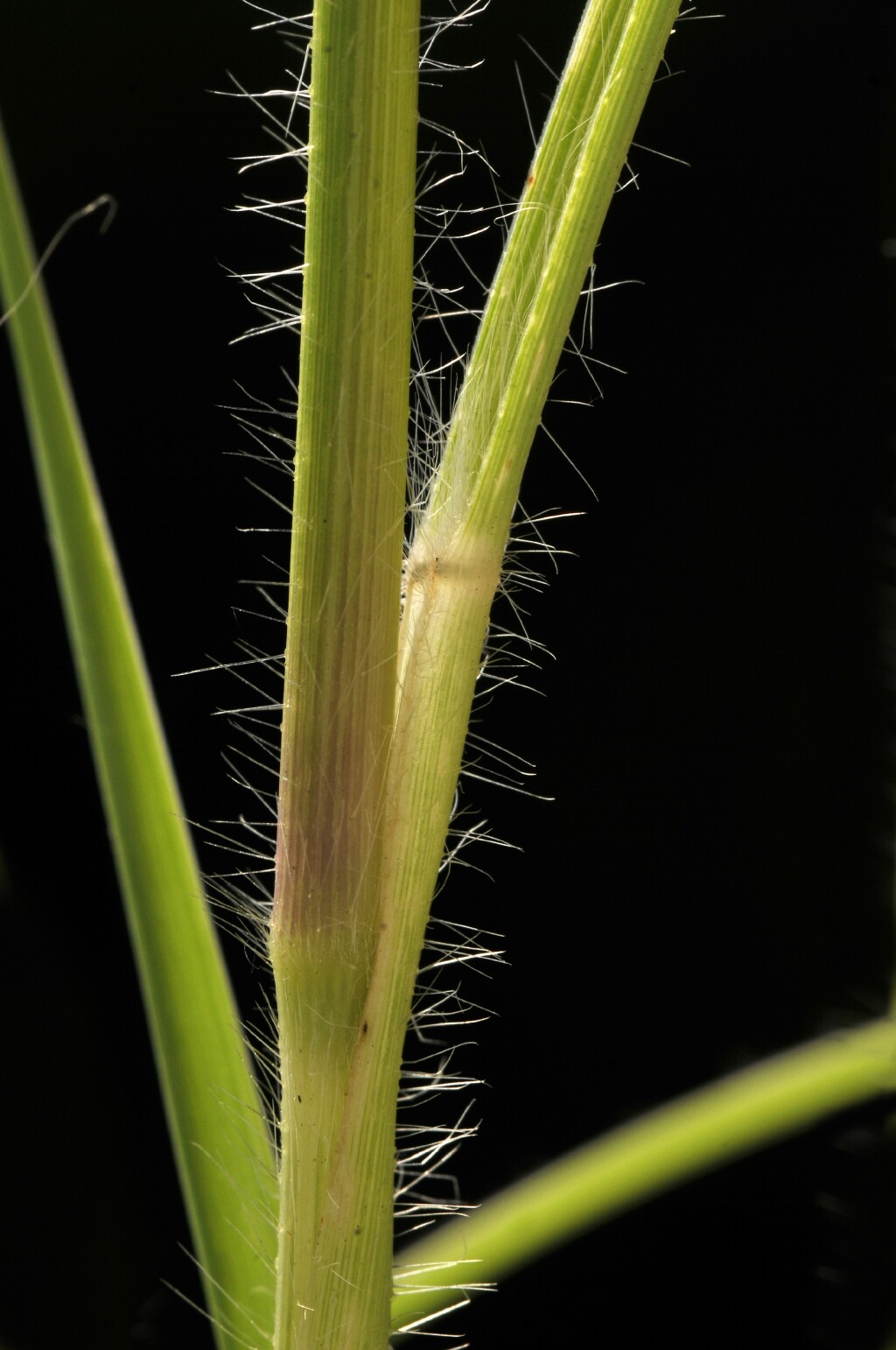Panicum effusum
R.Br. Hairy PanicShortly rhizomatous perennial. Culms erect, to 100 cm high; nodes hairy. Leaves hairy with rather coarse, partly spreading hairs, rarely almost glabrous; blade flat, to 25 cm long and 7 mm wide; ligule c. 1 mm long, ciliate. Panicle 8–40 cm long, fully exserted at maturity, primary and secondary branches widely spreading, at least some primary branches opposite or whorled. Spikelets plump, 2.2–3 mm long; lower glume 3–5-nerved, ovate, acute, c. half as long as spikelet; upper glume usually shortly separated from lower; upper glume 5-nerved, acute, as long as the spikelet; lemma of lower floret 5–7-nerved, subequal to upper glume; palea of lower floret c. half as long as its lemma; fertile lemma obtuse, very plump at maturity, c. 0.7 mm shorter than spikelet, hard, shining, slightly granular (becoming indistinctly so at maturity), dorsally rounded; palea subequal to lemma, flat. Flowers Oct.–May.
LoM, MuM, Wim, VVP, VRiv, RobP, MuF, GipP, OtP, Gold, CVU, GGr, NIS, EGL, EGU, HSF, HNF, Strz, MonT. All mainland states. Occasional on seasonally inundated, sandy soils of the north-west and near and along the Murray (e.g. Kings Billabong, Robinvale, Barmah, Wodonga), mainly in rain-shadow country in the east (e.g. Suggan Buggan, Swifts Creek, Glenaladale), and on the basalt plains immediately west of Melbourne.
Walsh, N.G. (1994). Poaceae. In: Walsh, N.G.; Entwisle, T.J., Flora of Victoria Vol. 2, Ferns and Allied Plants, Conifers and Monocotyledons, pp. 356–627. Inkata Press, Melbourne.
 Spinning
Spinning


